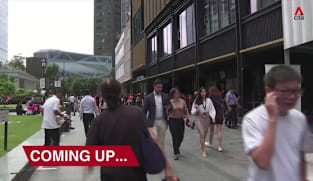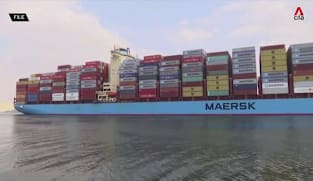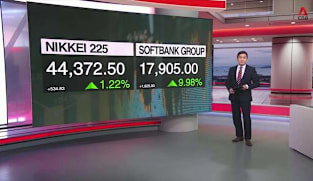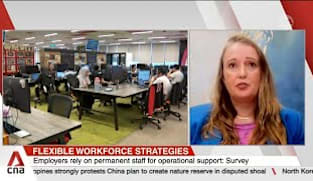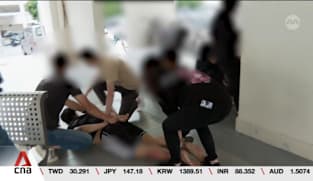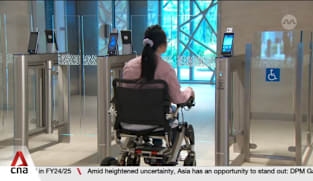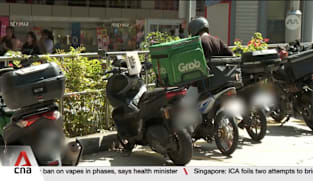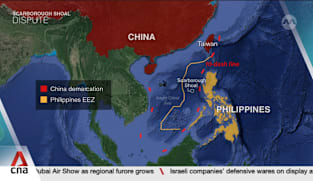Adjournment motion on building a vibrant and creative economy for the arts
Exempt high-value art sales from the Goods and Services Tax (GST) to boost Singapore’s position as a leading art market hub. NMP Usha Chandradas made this call in an adjournment motion in Parliament on Wednesday (Nov 22), saying that more can be done to align the development of the arts sector with Singapore's economic goals, and in particular with respect to its tax policies. She pointed out that Hong Kong, a major art market in the region, does not have a regime of GST or value-added taxes. “The result then is that it is often more cost-effective for art dealers to transact higher-value sales through Hong Kong than in Singapore,” she said. She added that she had been told anecdotally that this has been a longstanding issue for art gallerists in the visual art space as it makes large art deals hard to conclude in Singapore. “Tax exemptions may well be harnessed as a useful tool to grow what Singapore believes to be important industries,” she said. “Singapore is home to excellent galleries. They exhibit to an international audience, making sales to reputable institutions all over the world. So, the question to be asked is this - how can we scale this to our advantage and make Singapore a world-class art trading hub? A relook of our GST policy is perhaps one way to start,” she said. Ms Chandradas urged the Government to not only give money to the arts, but to also work towards developing a viable and sustainable ecosystem for artists and creative producers to flourish and thrive. She highlighted the need to strengthen the resilience and fortitude of the people who live and work in the arts sector. For the creative economy to thrive, the audience must value the products created by artists. “A common refrain that is heard amongst artists is why Singapore consumers will think nothing of spending thousands of dollars on designer handbags, but will hesitate when it comes to spending similar amounts on works of local art. Here, education for consumers is key,” she said. She urged the Government to remember that, in addition to schools and institutions, working artists and independent art spaces also have a key role to play in educating the public about why art is necessary and about what good art is. Responding, Minister of State for Culture, Community and Youth Low Yen Ling said Singapore has made “significant shifts” in its support for the arts - expanding from traditional forms to a more diverse and inclusive approach that embraces different artistic expressions. She highlighted the progress of various initiatives mapped out under Our SG Arts Plan (2023-2027) to further the arts scene’s development. These ranged from capability development schemes for self-employed persons in the creative industries to new infrastructural developments. “Our arts and culture landscape has really come a long way. We will continue to strive and make strides to develop our arts workforce, create diversified spaces for the arts, provide funding support and grow discerning audiences,” she said.
Exempt high-value art sales from the Goods and Services Tax (GST) to boost Singapore’s position as a leading art market hub. NMP Usha Chandradas made this call in an adjournment motion in Parliament on Wednesday (Nov 22), saying that more can be done to align the development of the arts sector with Singapore's economic goals, and in particular with respect to its tax policies. She pointed out that Hong Kong, a major art market in the region, does not have a regime of GST or value-added taxes. “The result then is that it is often more cost-effective for art dealers to transact higher-value sales through Hong Kong than in Singapore,” she said. She added that she had been told anecdotally that this has been a longstanding issue for art gallerists in the visual art space as it makes large art deals hard to conclude in Singapore. “Tax exemptions may well be harnessed as a useful tool to grow what Singapore believes to be important industries,” she said. “Singapore is home to excellent galleries. They exhibit to an international audience, making sales to reputable institutions all over the world. So, the question to be asked is this - how can we scale this to our advantage and make Singapore a world-class art trading hub? A relook of our GST policy is perhaps one way to start,” she said. Ms Chandradas urged the Government to not only give money to the arts, but to also work towards developing a viable and sustainable ecosystem for artists and creative producers to flourish and thrive. She highlighted the need to strengthen the resilience and fortitude of the people who live and work in the arts sector. For the creative economy to thrive, the audience must value the products created by artists. “A common refrain that is heard amongst artists is why Singapore consumers will think nothing of spending thousands of dollars on designer handbags, but will hesitate when it comes to spending similar amounts on works of local art. Here, education for consumers is key,” she said. She urged the Government to remember that, in addition to schools and institutions, working artists and independent art spaces also have a key role to play in educating the public about why art is necessary and about what good art is. Responding, Minister of State for Culture, Community and Youth Low Yen Ling said Singapore has made “significant shifts” in its support for the arts - expanding from traditional forms to a more diverse and inclusive approach that embraces different artistic expressions. She highlighted the progress of various initiatives mapped out under Our SG Arts Plan (2023-2027) to further the arts scene’s development. These ranged from capability development schemes for self-employed persons in the creative industries to new infrastructural developments. “Our arts and culture landscape has really come a long way. We will continue to strive and make strides to develop our arts workforce, create diversified spaces for the arts, provide funding support and grow discerning audiences,” she said.








